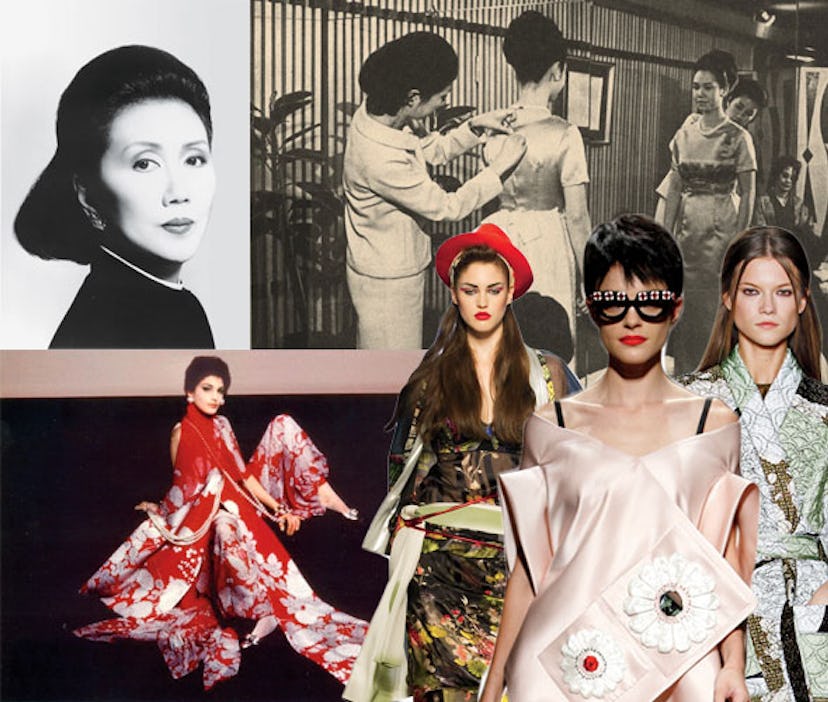Madame Butterfly

Having shuttered her Paris atelier in 2004, Hanae Mori is perhaps more recognized these days for her fragrances than her fashion. But during her heyday in the ’70s and ’80s, the Japanese designer—who started her business in 1951 above a Tokyo noodle stand and turned it into a $230 million–a–year global dynasty—was renowned for skillfully bridging Eastern culture with Western aesthetics. She began by incorporating Japanese details such as kimono sleeves onto the Dior-like styles she saw on U.S. Army wives. Then, inspired by Coco Chanel, whom she met in 1961 when Mori was getting a suit fitted in Paris, she took her designs to the runway, becoming the first and, to this day, the only Asian designer admitted to the Chambre Syndicale de la Haute Couture. Shown in Mori’s Avenue Montaigne salon, her collections—which have lured fans like Nancy Reagan, Imelda Marcos, and Princess Grace of Monaco—were a parade of color and pattern. Silk cocktail dresses were belted with obi-esque sashes, chiffon gowns were cut like kimonos, and everywhere the eye looked, there were overblown blooms and butterflies—the symbol of the house. In fact, Mori, who is 87 and still has boutiques in Tokyo, became so enamored with butterflies, she had the interiors of her two BMWs customized with red ones.
This season, designers seemed equally fanatic about the ethereal insects, releasing them in swarms onto the runways. Bottega Veneta’s Tomas Maier clustered them onto handbags; at Christian Louboutin, a single specimen alighted on platform heels; and Thakoon Panichgul sent out an assortment of dresses aflutter with the creatures. Backstage, he explained that his butterflies were merely an attempt to add “whimsy” to the collection—but it appeared as though Mori was flitting about the designers’ subconscious in all sorts of ways. There were silk robes at Jean Paul Gaultier, bomber jackets emblazoned with Asian motifs at Pucci, and at Prada, kimono-style satin tops that, covered in oversize flower prints, further evoked Mori’s feminine exuberance. “The whole Japanese concept of beauty is based on concealment,” Mori once said. “I realized I should change my approach and help a woman stand out.”
Clockwise, from top left: Chrysanthemum Pajamas, Portrait: Richard Avedon/courtesy of Hanae Mori; article clippings: Japan Illustrated, The Japan Times Quarterly Pictorial Magazine; Runway: Cnp Montrose (3); Clutch: Photographed By Marko Metzinger; Escape Artist: Captiva Island: Photographed By Robin Hill; Rauschenberg: Terry Van Brunt, © Robert Rauschenberg Foundation